| 1 | How it all begins |
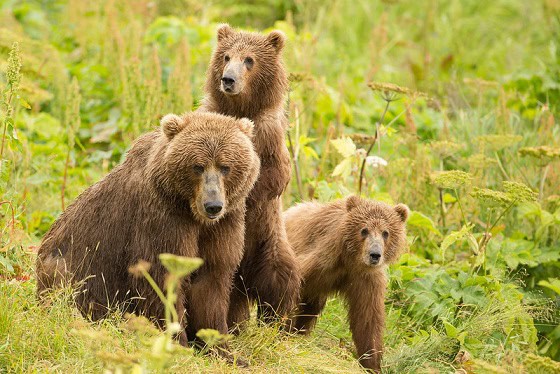
Bears are a rare animal species to have delayed implantation, with the egg floating around freely in the uterus for nearly half a year. The peak bear mating season is May and June, but whether the fetus attaches to the uterine wall depends on whether mama bear fattens up sufficiently before hibernation kicks off. If she fails, then the fetus will spontaneously abort, but if she does, then cubs will be born inside the den in late January or February.
2 cubs is a typical number, 1 and 3 are fairly common, and 4 cubs happens once in a blue moon, such as with the famous Sow 399 of Yellowstone in 2018. The cubs are born blind and hairless, and at 1 pound in weight, they’re far smaller than a human baby, more like the size of a squirrel. Some say it’s like they’re born premature.
Since brown bears aren’t true hibernators, a mother bear will awaken frequently to feed her cubs milk, which peaks at 45 ounces of milk daily. She’ll also groom them, rearrange their positions, and comfort the newborn bears, who probably don’t have a clue what’s going on (face it, neither did we when we were babies). Bears are unique among mammals in that they make motor-like sounds of contentment when drinking their mother’s milk, or otherwise comfortable. Mother bears have six nipples, and the cubs normally start on the two closest to the pelvis, which the mother bear “switches off” as the cubs grow, forcing them to move to the higher 4.
| 2 | The cubs leave the den |
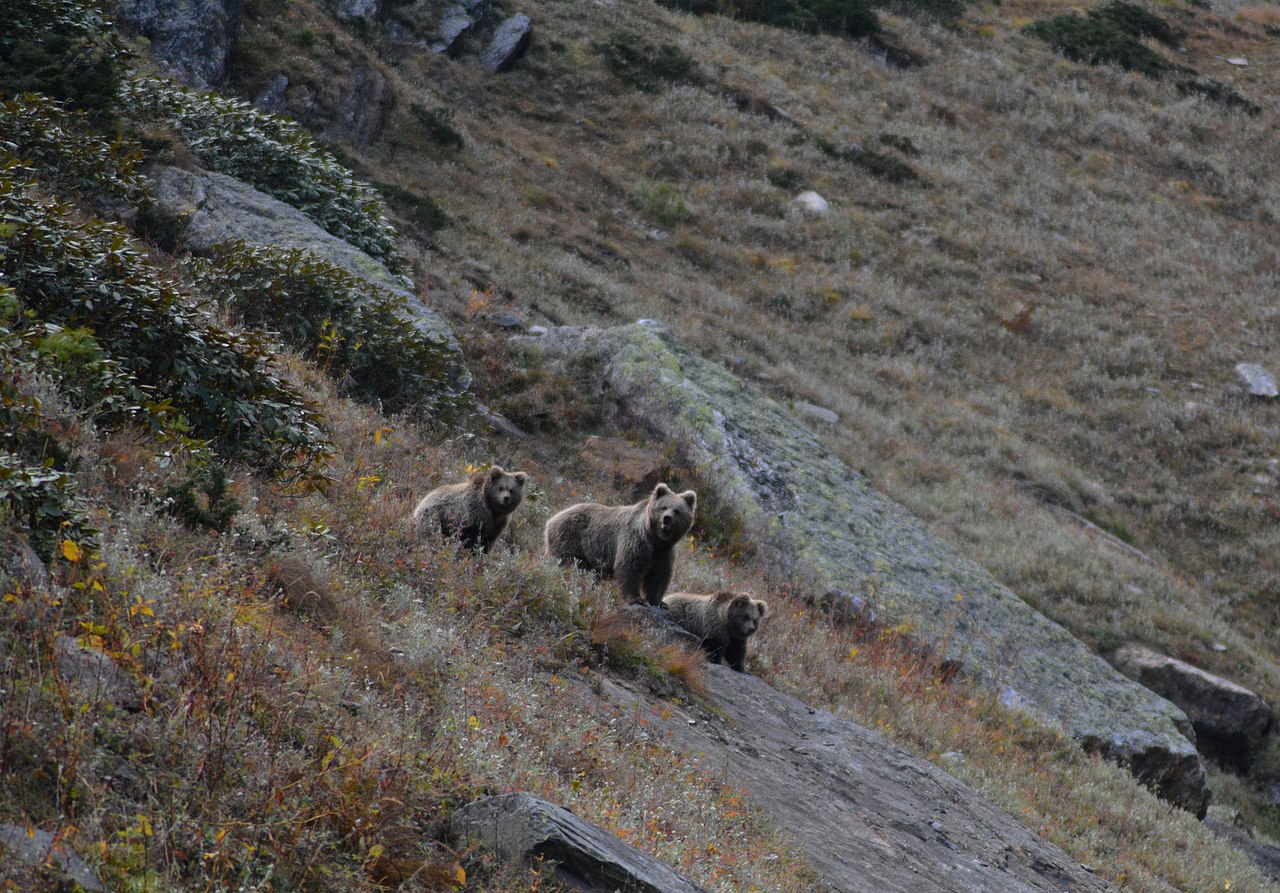
Spring time arrives. This is a crossroads for the cubs, as early season food is suddenly less available for the mother, who needs to keep her milk production flowing at all costs. Root, flowers, and the naturally deceased carcasses of elks are order of the day, but the grim reality is that 15-40% of cubs don’t survive, although this isn’t solely because of early starvation. One third of all cubs die during the May-June mating season, and 90% of their bodies are covered with the claw marks of marauding adult males.
The fact is that infanticide is common in the bear world, because if a male kills a mama bear’s cubs, she will enter her estrous cycle within 2-4 days and be receptive to mating again, which is exactly what the male bear wants. Then there’s simple accidents such as falling off a cliff, or the hungry jaws of a wolf pack.
As summer arrives, the mother bear reaches a tipping point. She’s required by the laws of nature to pack on 200 pounds in preparation for winter hibernation, but by now, the cubs are far too large for her to meet their requirements alone. Thus, daily nursing ends 5 or 6 months after birth, although they might still suckle the occasional mouthful for the next year. Berries and scraps of leftover salmon become the young bears’ staples. After leaving the den weighing 10 pounds, cubs can double their weight every month, eventually ballooning to 80 pounds by the beginning of the next hibernation season.
| 3 | How cubs learn to be grizzly bears |
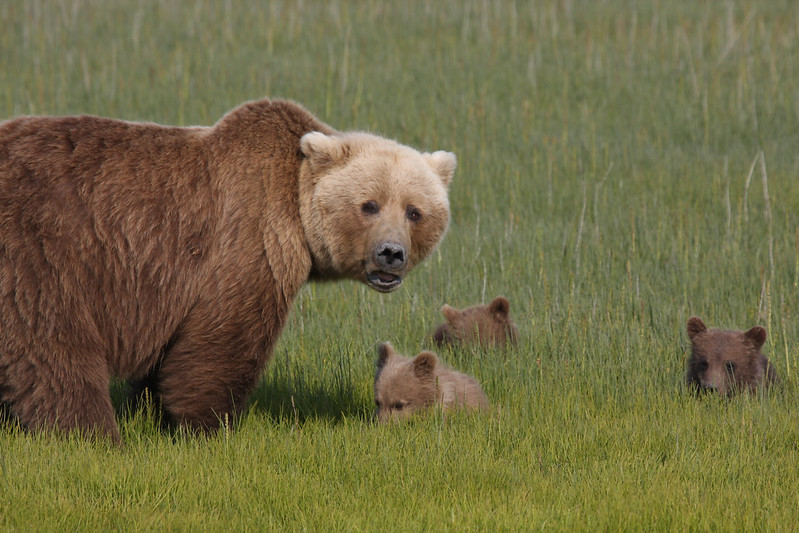
There’s no such thing as grizzly bear school, as from age 0 to 2, the only teacher a brown bear cub has is its mother. There are no rest days – a cub will learn how to pick edible foods like berries, identify bear trails through the woods, go fishing, and much more.
Mother bears are surprisingly inventive teachers. One trick, for example, is to snap up a fish with her jaws, walk over to the shallower waters, and drop the flapping fish to the ground so that the cub can have a go, copying her methods.
Digging dens is another classic lesson. Grizzly cubs lack the forepaw strength to dig in frozen soil, so by watching their mother, they gradually learn the best digging techniques, the best mountainside locations, and how to drag fallen vegetation towards the den’s entrance for insulation.
One could argue that mother bears aren’t truly teaching their cubs, that the cubs learn everything by watching. The clearest evidence to the contrary is their tree climbing, which grizzly adults almost never do due to their bulky weight (unlike black bears). With cubs in tow, mama grizzlies will commonly scoot halfway up a tree trunk for no apparent reason, before looking to their cubs in expectation of them following. These pictures from Martinselkonen Nature Reserve in Finland show all 4 bears of the family climbing a tree at once.
| 4 | Mother bears can be tough |

At times, mother bears can be seriously unforgiving, scolding their offspring with a “huff huff” noise if they make a mistake. But this strictness is necessary to prepare them for the harsh bear world.
Mother bears will commonly force their offspring into busy salmon spots to teach them to fish, despite the looks of sheer terror on the cubs’ faces. By the famous Brooks River of Alaska, a mother and cubs were once seen being chased away by a vicious male and hiding in a tree. They stayed there for hours, before the mother dropped down and wandered back to the fast-flowing river as though nothing had happened, despite the male still being there. The cubs were practically begging her to give up.
In 2011, meanwhile, photographers by Alaska’s Hallo Bay captured a bone-chilling attack on a cub by a male bear known as Secretariat. The cub was actually in the male’s paws, ready to be snuffed out forever, with water splashing everywhere in the shallows, before the mother bear suddenly charged from nowhere. She used her cub-defending super strength to fight off the male while on her hind legs, beating Secretariat back onto the sandy shore. The terrified cub rejoined its sibling, with bloodstains on its back, but when the mother returned, she comforted her cub for approximately 3 seconds, as though to say “get used to it”.
| 5 | 2018 death-defying video |
This 2018 video is an excellent illustration of a mother bear’s strict teachings. In eastern Russia, a drone captured two bears climbing an incredibly steep, snowy cliffside, where a man with hiking shoes would plummet to his death instantly.
Within 20 seconds, the mother uses all her climbing skills to ascend to the summit. What does she do next? She sits and waits for the cub, of course. Bear Junior loses his grip and slips about 10 metres down the slope, almost falling off camera. Patiently, he reaches the top, and his mother makes a lazy swipe to haul him in. But this just distracts the cub, and suddenly, he’s falling down the snowy slope for over 100 metres.
The cub vanishes from the bottom of the camera, and the viewer fears the worst. Finally, he arrests himself on the rockier sections, before beginning the arduous climb back up. The cub struggles for nearly 3 minutes, while the mother bear simply sits on the snowy ridge admiring the view. At last, the cub reaches the summit, and instead of comforting her offspring, the mother just gallops off instantly.
This video created a tidalwave of controversy when it was first released. Some called it a shining example of never giving up in the face of adversity, but others accused the drone operator of harassing wildlife. Apparently, the mother’s hasty swipe was clear evidence that she saw the drone as a weird new form of predator.
| 6 | The truth about defensive mother bears |
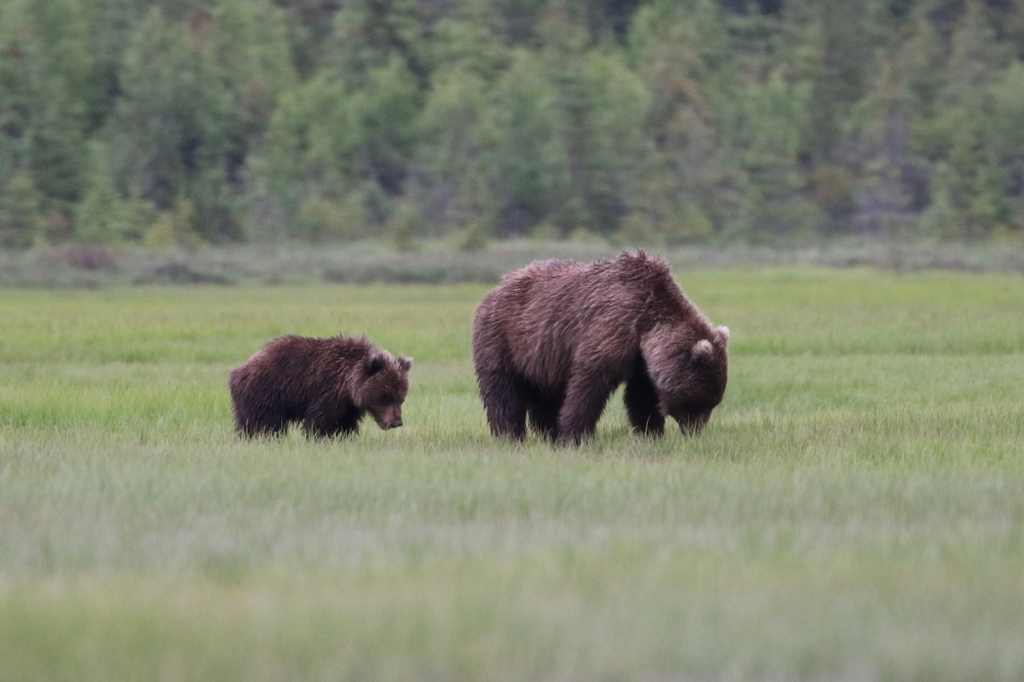
Everyone knows that the most dangerous place in the universe is between a mother bear and her cubs, but is it true? According to statistics, 70% of all grizzly bear attack fatalities involve a defensive mother. They’re far more aggressive than black bear mothers, who usually flee or send their cubs scampering up a high tree instead, although grizzly mothers occasionally deploy the tree option as well. Generally, a worried mother will only give up if you play dead, to convince her that the threat is neutralised, while a predator bear will just gobble you up regardless.
Every bear has a different personality, and some mother bears defend their cubs particularly aggressively. 15 year old Grazer, AKA bear 128 of Brooks Falls, has gained a loyal following on the internet for her mad attempts to swipe any rival bears that come within even a few meters of her family as they fish for salmon. She’s one of the most dominant females around – most rarely bother competing with males for the better fishing spots. Grazer gave birth to her first litter in 2016, followed by a fresh batch in 2020.
Bear mothers are so defensive that they’ll kill moose or elk who stray too close, despite ungulates only caring about a luscious patch of grass. This is exactly what happened in the first recorded case of a bear decapitating a moose with a single swipe of its paw.
| 7 | Swimming |

Sometimes, brown bear cubs will hop on their mother’s backs, and that includes when crossing treacherous lakes, letting their mother do all the hard work. The sloth bear is the only species that regularly carries its cubs, to defend them against hungry tigers. One day in 2018, however, a grizzly bear family was relaxing on a small island in Lake Aleknagik in southwest Alaska, when the mother randomly ran into the water.
Just in the nick of time, her two 6 month old cubs hopped onto her back. The grizzly mother swam for 400 yards while the clubs clung onto the blubbery, fat-filled body, which gives grizzly bears surprising buoyancy in spite of their 600 pound weight (for females).
When they reached the shoreline, the mother grizzly barely took notice of her cubs and quickly disappeared into the bushes. The cubs tumbled off, gradually stood up, and walked after her cautiously. According to David Roseman, the man who shot the video, he had never seen anything like it in 21 years as an employee. It shows how adaptable grizzly bear mothers can be in keeping their cubs safe. That said, polar bears pull off this trick regularly, such as in the water near Svalbard back in 2012, where it looked more like the cub was piloting a small boat than riding its mother.
| 8 | When do cubs leave their mothers? |
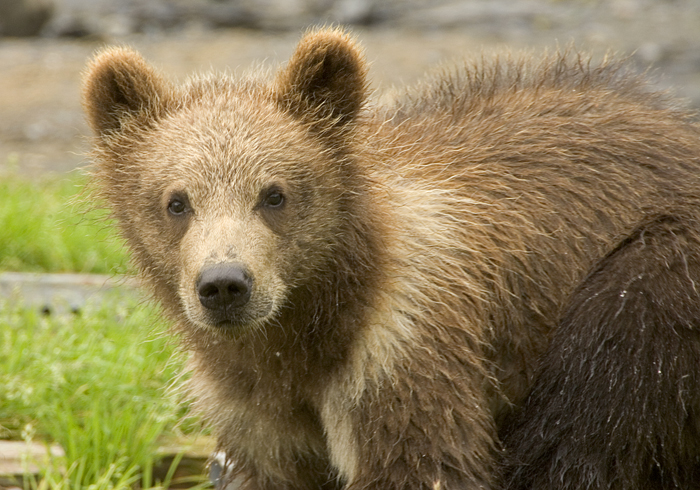
There’s no hard and fast rule. In North America, the average departure date was once found to be 2.5 years after birth, but a 4 year mother-cub bond isn’t unheard of. For some reason, brown bear cubs leave their mothers much earlier in Eurasia. Sweden has a huge number of yearling cubs by themselves, and Japanese bears on Hokkaido were once concluded to leave after just under 2 years. These are two different subspecies, the Ussuri brown bear versus the grizzly bear, so it could be subtly different instincts which have evolved.
The next question is why they leave. With all this love and attention flying between them, it seems amazing that the grizzly family ever ends, but this is the animal kingdom. When the cubs reach two or three, a mother bear will slowly stop teaching them, which confuses them at first. She will tolerate their presence, but the final sledgehammer blow comes with the arrival of a male, who is clearly pursuing a mother he hopes is in estrous.
If the female is receptive, then she will initially feel torn, but raw bear attraction nearly always win out. A mother will suddenly spend all her time with the male, and if the confused and distressed cubs try to return, she may roar and chase them away. Or worse, the male may roar and chase them away. Some mothers even abandon their yearling cubs, as happened in July 2014 when bear 856 pursued bear 402 by the famous Brooks River of Alaska.
| 9 | Family breakup, part 2 |

Another scenario is when a sexually activated mother suddenly loses her fear of male bears and allows them to come close. This is an untenable situation for the frightened cubs, and in sheer panic, they are forced to leave, to wander into the distance for food.
The cubs are normally visibly distressed when this happens. The mother had been their protector and guardian their whole life. The cautious siblings might stick together for a year afterwards, to battle it out in the harsh adult world together, before gradually drifting apart.
Sometimes, the whole process is less dramatic, like these pictures captured in Siberia, where the mother simply took one last look at her cubs before swimming over the Yenisei in Siberia. She knew that the river was too deep, and after several hours of waiting on the shore, it dawned on the cubs that they were now on their own.
Mother bears may even sacrifice their bear cubs to save themselves, like in 2015, when a mother bear was seen wading through a raging torrent of a river in Alaska. She made the decision to leave her two cubs, who struggled valiantly and almost went under before being miraculously saved by a passing fishing vessel. The captain searched for the mother by the shore, but she had already disappeared. It seems that once a bear decides to abandon her cubs, regardless of the cause, it can be like an irreversible switch flipping.
| 10 | Adoption |
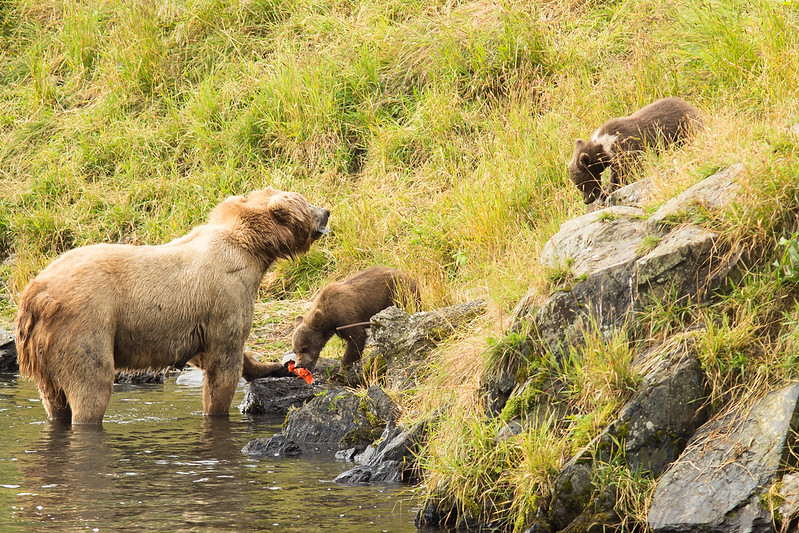
Alternatively, there’s a well known phenomenon of grizzly supermums – bears who adopt struggling cubs in need. Firstly, let’s get the dark side out the way. Occasionally, in a mad spell of baby fever, larger female bears will kidnap the cubs of smaller ones and raise them as their own. It’s nature, and it happens.
Now for the positive part. In July 2014, bear watchers noticed a 1.5 year old grizzly cub clinging to the branches of a spruce tree. It had been abandoned by its mother (bear 404) unusually early, in order to mate with a dominant local male. The cub left the tree after 24 hours, but its fishing skills were poor, and it was in dire straits. Not to worry – “supermum” Holly rode to the rescue. This Brooks River resident already had form, having saved the life of a random cub with a broken leg back in 2007. Now, she took the abandoned cub under her wing, which was all the more surprising given that she had one cub to feed of her own. Observers spotted the cub trailing Holly (bear 435) by the shoreline, who nursed him and gave him equal bear guidance to her own cub. They even hibernated together that winter.
By 2018, the cub had grown into bear 555. He had truly made it in life, relaxing in the famous Brooks River “jacuzzi” and even competing in the yearly fat bear contest. It was all thanks to supermum Holly, who herself was sighted with a new cub in 2020.

enjoyed the education